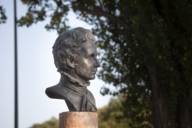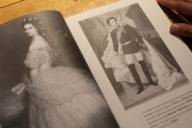
Although Ludwig II (1845 – 1886) was born in Munich and is also buried here, he really was no fan of the city during his lifetime. Indeed, the Fairytale King much preferred the isolation of his castles in the Alpine foothills.
In a letter to the Earl of Dürckheim, he even described his royal seat as a “hated, unlucky city”. He had little time for the citizens of Munich either, describing his subjects as “idlers and philistines”; the idea of having the common touch was a foreign concept to him.
Equally his people did not hold him in high regard, mocking their reclusive king, who, with his Linderhof, Neuschwanstein and Herrenchiemsee castles, had created a dream world in the foothills of the Alps, into which he withdrew at every opportunity. Today, Ludwig II is world-famous for these magnificent buildings in particular, his renown extending far beyond the city.
However, in spite of the deep disdain that the King and the city once held each other in, Ludwig now enjoys astonishing popularity in Munich, evidenced by the many busts and monuments honouring him in the city. Those wishing to walk the paths once taken by the Fairytale King should begin at Schloss Nymphenburg (Nymphenburg castle), where Ludwig II was born in 1845. A bust of the crown prince as a boy now stands in the room in which he was born. His magnificent carriages and sleighs are exhibited in the Marstallmusem (Carriage Museum) in Schloss Nymphenburg, along with a collection of paintings of his favourite horses.

As an adult, Ludwig occupied an apartment on the third floor of the northwest pavilion in the Residenz palace, the city palace of the Wittelsbach family in the heart of Munich. From here, it was a short walk to the Cuvilliés and National Theatre, where he enjoyed numerous private performances between 1872 and 1885.
Following the discovery of Ludwig’s body in Starnberger See (Lake Starnberg) on 13 June 1886, much was made of the fairytale-like air created by his secretive ways, his unusual preferences and the enigmatic details of his death itself.
The King was laid to rest in the crypt of St Michael’s Church in what is now the pedestrian zone of the city. The circumstances surrounding his death remain unclear, which has given rise to much speculation and numerous conspiracy theories. Requests to open his sarcophagus in the royal vault to search for traces of bullet holes in the body have always been denied due to objections by the Wittelsbach family.